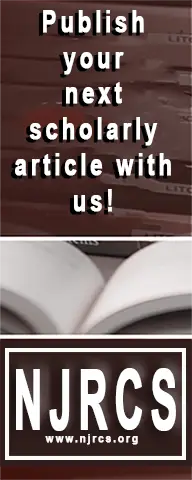Plagiarism and Use of AI tools
Editorial Board of NJRCS adopts Turnitin Software (with AI features) to ensure that all articles submitted to the journal are free of plagiarism. A work will be rejected immediately if the plagiarism checker returns an unsatisfactory result.
Only manuscripts with a similarity value of 15% or lower will be subject to the peer review process. If, by any chance, a published work turns out to be plagiarised, the Editorial Board will take adequate measures to ensure that the work is withdrawn.
Use of Artificial Intelligence (AI) tools
Plagiarism is typically defined as presenting someone else's work or ideas as one's own. While a generative AI tool might not qualify as a "someone," using text generated from an AI tool without citing is still considered plagiarism, according to Georgetown University Policies, because the work is still not the researcher's own.
Therefore, generative AI tools like ChatGPT and others should not be identified as authors because they do not meet authors' requirements. More so, any usage of artificial intelligence (AI) technologies in writing and research must adhere to our plagiarism policy, best practices for citation and acknowledgements, and be clearly disclosed and explained to readers to maintain transparency.
Specifically, if an AI tool is used to:
- create images in the manuscript
- to generate text in the manuscript,
- legitimate references and citations
- analyse or extract insights from data or other materials
It must be fully stated, described, and explicitly disclosed in the appropriate sections, such as the caption and acknowledgement section.
We strongly discourage authors from presenting words, ideas, data and other materials generated using AI tools as their own without proper acknowledgement.

